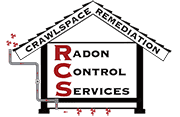What is a Radon Zone?
Radon zones were implemented in 1993 to categorize the overall radon risk of a given county.
- Zone 1 is high risk, with average radon levels at 4 pCi/L (picocuries per liter) or higher.
- Zone 2 is moderate risk, between 2 and 4 pCi/L on average.
- Zone 3 is low risk, with levels averaging below 2 pCi/L.
- It is recommended that mitigation efforts be conducted if radon levels in your home are above 2 pCi/L, and a necessity if levels are above 4 pCi/L.
Do I Need to Test for Radon?
It is important to remember that radon zones are simply an estimate of the risk you may face. It is still necessary to get tested, even if you live in zone 3, as radon levels will vary from home-to-home, and over time.
Likewise, simply living in a zone 1 county doesn’t mean you have dangerously high radon levels, just that you are at a higher risk. Testing yearly is the best way to monitor levels and keep your home safe.
All Indiana counties fall under zones 1 or 2.
Click here for more info from the EPA about radon zones in Indiana.

